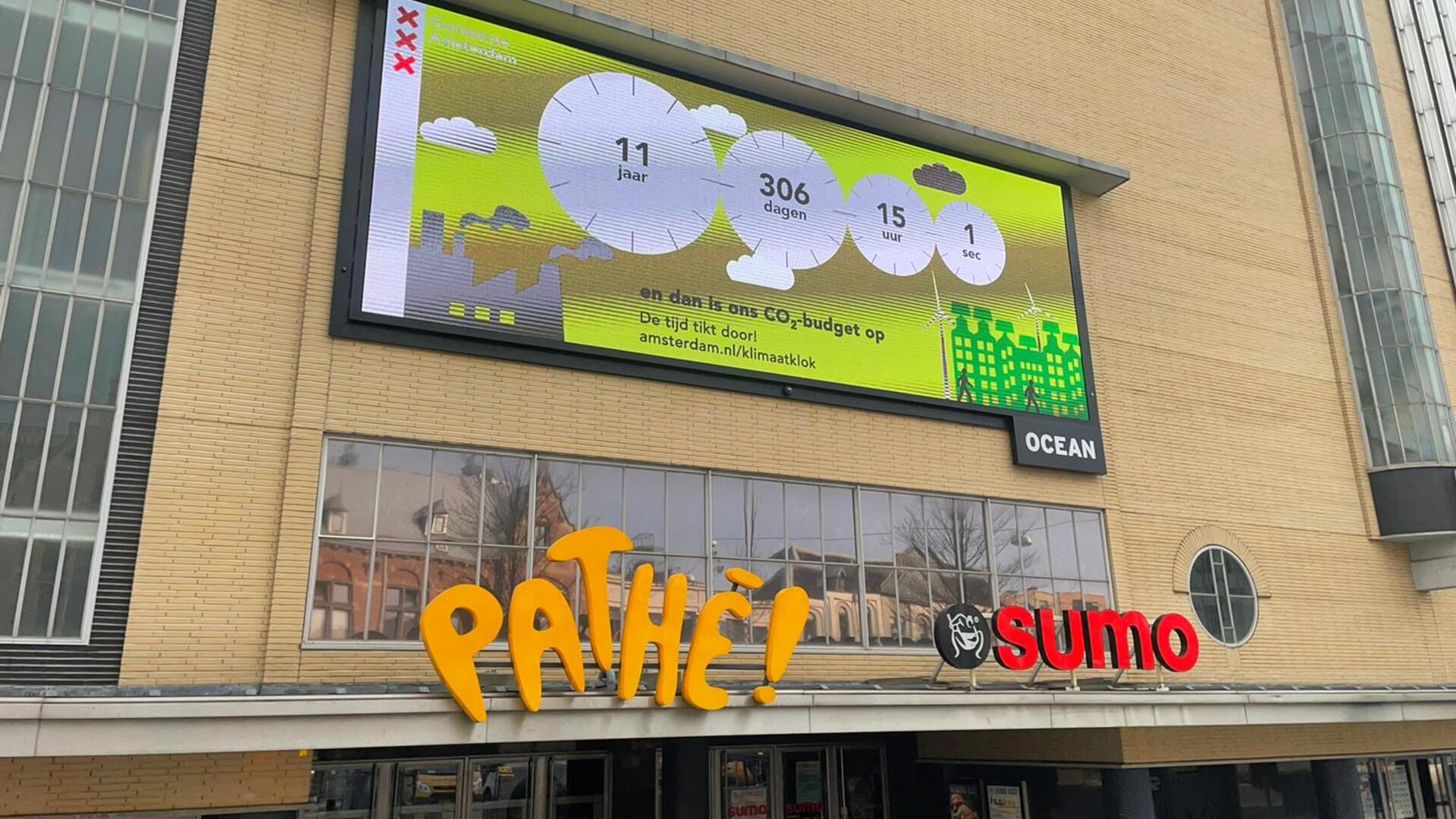To contribute to the fight against global warming, Amsterdam would like to be entirely carbon neutral by 2050. Therefore, the city council has determined the amount of carbon dioxide that the city has left to burn in a public report. The climate clock counts down to the moment that the city will have used its carbon “budget”, based on its current practices. Better said: a deadline that we hope never to reach. The amount of carbon dioxide that Amsterdam releases into the atmosphere is expected to drop to 3910 kton (still 3 per cent above the amount released in 1990). By 2030 this amount will expectedly further drop to 2400 kton (37 per cent lower than in 1990).
The clock is an extra motivation for every initiative taken by the inhabitants and the city council to reduce our carbon footprint. If we succeed in doing this, time will be added to the clock. The earlier we do take action, the more effective these actions will be. In this way, the clock emphasizes the urgency of measures like better isolation of houses, the construction of wind turbines, and car traffic elimination.
The climate clock is also meant to raise awareness in Amsterdam and demonstrate how citizens in Amsterdam can contribute to lowering our carbon footprint. To illustrate: a ton of carbon dioxide equals driving 6000 km with a diesel car and flying from Amsterdam to London and back (per passenger).
Ultimately, however, Amsterdam can only reach climate goals with help and participation from the government, according to Jasper Groen. “Amsterdam does everything to become carbon neutral but cannot do so without the rest of the country. Among other things, we need obligatory solar panels for big companies, higher gas prices for big users and money to save energy.”
